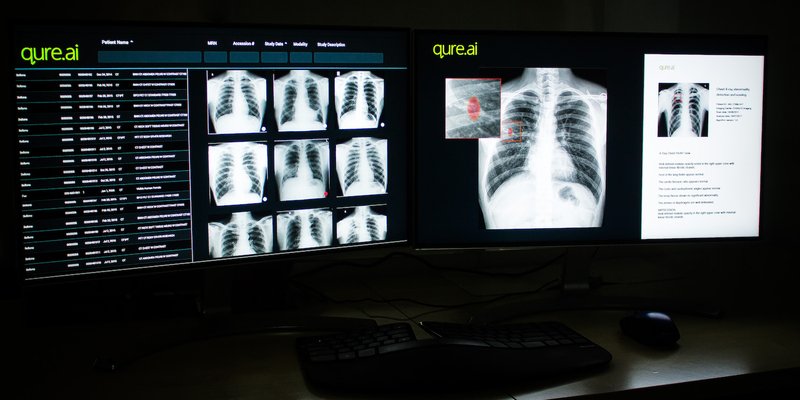
Company: Qure.ai Product: qXR
The utility of artificial intelligence in identifying radiological evidence of lung cancer and pulmonary tuberculosis in a high-burden tuberculosis setting
South African Medical Journal, 2024
Abstract
Background:
Artificial intelligence (AI), using deep learning (DL) systems, can be utilised to detect radiological changes of various pulmonary diseases. Settings with a high burden of tuberculosis (TB) and people living with HIV can potentially benefit from the use of AI to augment resource-constrained healthcare systems.
Objective:
To assess the utility of qXR software (AI) in detecting radiological changes compatible with lung cancer or pulmonary TB (PTB).
Methods:
We performed an observational study in a tertiary institution that serves a population with a high burden of lung cancer and PTB. In total, 382 chest radiographs that had a confirmed diagnosis were assessed: 127 with lung cancer, 144 with PTB and 111 normal. These chest radiographs were de-identified and randomly uploaded by a blinded investigator into qXR software. The output was generated as probability scores from predefined threshold values.
Results:
The overall sensitivity of the qXR in detecting lung cancer was 84% (95% confidence interval (CI) 80 - 87%), specificity 91% (95% CI 84 - 96%) and positive predictive value of 97% (95% CI 95 - 99%). For PTB, it had a sensitivity of 90% (95% CI 87 - 93%) and specificity of 79% (95% CI 73 - 84%) and negative predictive value of 85% (95% CI 79 - 91%).
Conclusion:
The qXR software was sensitive and specific in categorising chest radiographs as consistent with lung cancer or TB, and can potentially aid in the earlier detection and management of these diseases.
Read full study